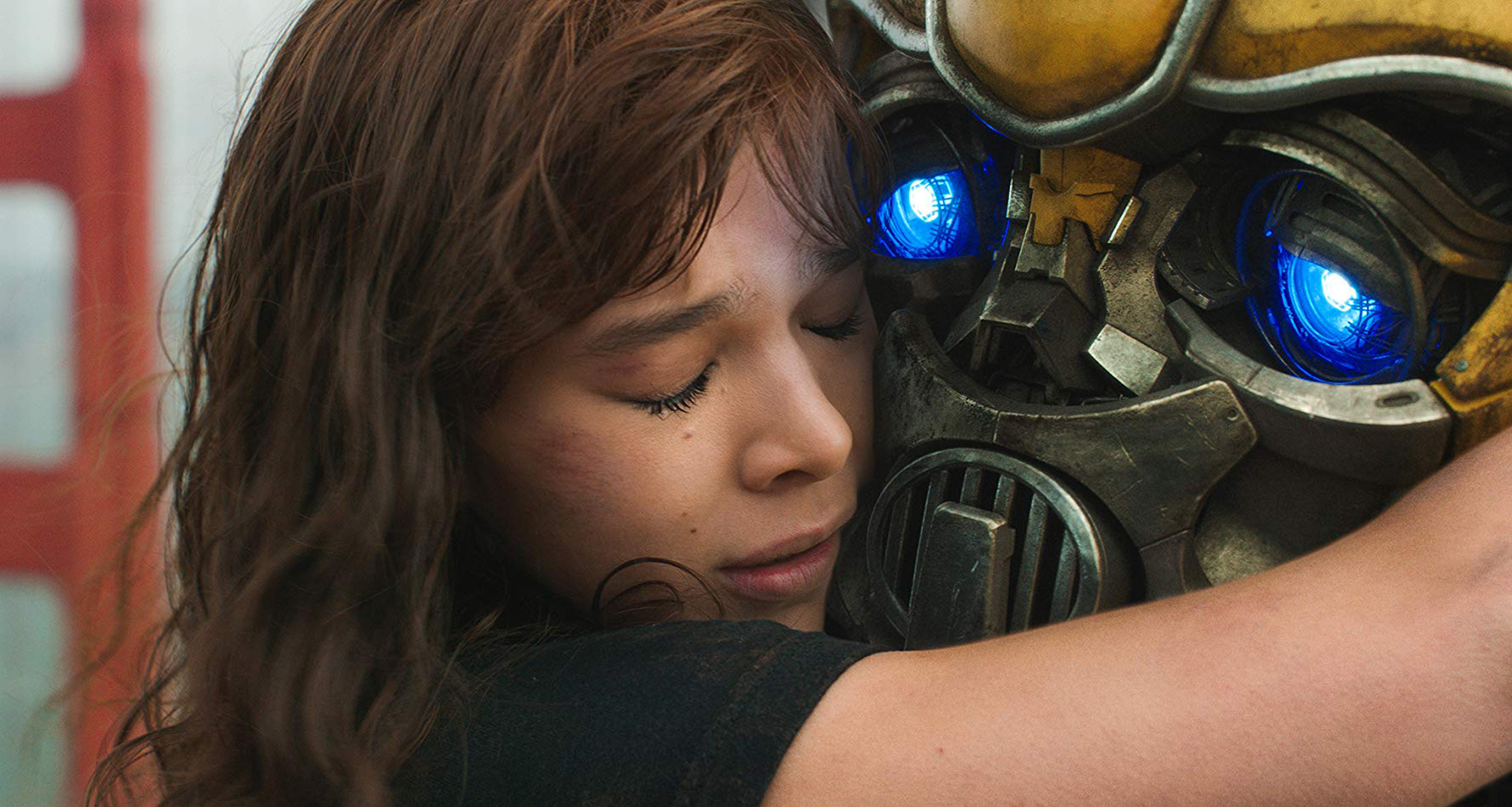
‘Bumblebee’ Revs Up the Transformers Franchise with a Fan Favorite and Girl Power
Written by: Valerie Kalfrin, CC2K Staff Writer
Bumblebee heads back to the eighties to revive the Transformers franchise with a focus on a fan favorite—and an endearing human protagonist who never would have been the lead in a film of this sort in that era.
Director Travis Knight (the acclaimed Kubo and the Two Strings) and screenwriter Christina Hodson (Unforgettable, the upcoming Birds of Prey) put Bumblebee, the scrappy VW Bug turned Camaro, front and center as the robot who fell to Earth. But what really energizes the story is the teenage girl in the driver’s seat.
Opening on the Transformers’ home of Cybertron, the film swiftly introduces the war between the sentient convertible Decepticons and the rebellious Autobots from the 1980s animated series and related toys. (Viewers of a certain age will be tickled to see Soundwave, Ravage, Shockwave, and others.) The Autobots’ leader, the fatherly Optimus Prime (still voiced by Peter Cullen), sends his soldiers to establish a new base somewhere.
One feisty and familiar yellow guy, here named B-127, lands on Earth, where he startles Agent Burns (WWE’s John Cena) and other soldiers on a training exercise, then fights a Decepticon on his trail and loses his memory.
He winds up in the form of a Volkswagen Beetle in a scrapyard, where Charlie Watson (Hailee Steinfeld, Spider-Man: Into the Spider-Verse) finds him while scrounging for parts for her late father’s Corvette. The scrapyard owner gifts her the car for her eighteenth birthday, and within moments of tinkering, she learns there’s more than meets the eye.
Steinfeld, an Oscar nominee at fourteen for 2010’s True Grit and relatably flawed in 2016’s Edge of Seventeen, grounds this fantastical friendship with an earnest and natural performance of genuine compassion and longing. She and Bumblebee (whom she nicknames for his beeping noises) both feel lonely and misunderstood.
A gearhead like Rey from Star Wars: The Force Awakens, Charlie likes The Smiths, Elvis Costello, and smoky eyeliner—all things that set her apart from the cardboard mean girls and other teens. It isn’t clear when her father died from a heart attack, but Charlie is still grieving, fixing the Corvette as a way to honor him. Meanwhile, her mom (Pamela Adlon, The Big Bang Theory) has remarried. She gives Charlie’s younger brother plenty of hugs before his karate class and scolds Charlie for sulking, buying her a book for her birthday on how to smile more. (Many of the humans are as wincingly shallow as in the late 2000s Transformers films.)
Bee has a damaged voice box, which Charlie helps remedy by replacing his radio with the one from her dad’s Corvette. He “speaks” by cycling the dial. She also coaches him on when to hide.
Meanwhile, two Decepticons (voiced by Angela Bassett and Justin Theroux) track Bee to Earth and convince the military that Bee is a war criminal. Cena is believably gung-ho, but he does have flashes of humor, such as when he points out, “They literally call themselves the Decepticons. That doesn’t set off any red flags?”

The story loves putting Bee into situations where the big robot unwittingly smashes everything human-size, although it wastes comic potential in scenes where Charlie’s mom borrows the car without asking. The pacing lags in parts when rounding out more of Charlie’s life, such as her grimy job selling boardwalk corn dogs or her neighbor (Jorge Lendeborg Jr. of Love, Simon) with an obvious crush on her.
But when the action erupts, it’s shot in a way that’s clear to follow, not just a mass of mangled metal. The animators skillfully bring the bright colors and original designs from the Transformers animated series to life.
They also imbue Bumblebee with an adorable personality shown in his big blue eyes and the tenderness toward Charlie. (Let’s face it: That VW roundness adds to his lovable persona.) He dusts sand off Charlie’s head, offers hugs, tucks into car form when chagrined, scoops her up in his arms, and urges her to stay out of harm’s way with a Smiths lyric (“I would hate anything to happen to her”).
Charlie is touched, but she’s also resourceful and capable enough not to sit on the sidelines, especially when Bee needs her. In helping him, she finds her own voice.
Parents should know that Bumblebee isn’t all warm and fuzzy—robots dismember and slice other robots; a few humans wind up splattered into goo. But it also gives us characters to care about and a sweet story arc of a girl and a robot who become friends when each needs that the most. (FWIW, my 9-year-old son liked Charlie a lot, calling her a lot less goofy than Shia LeBeouf’s Sam Witwicky in 2007’s Transformers.)
Someday, it won’t seem so unusual to have girls and young women having adventures like boys in The Iron Giant, Big Hero 6, and E.T. the Extraterrestrial—films that Bumblebee echoes in spades. Until then, it’s refreshing for youngsters to see that girls and boys can save the day, a female character isn’t there just to be in peril, and that the camera doesn’t get sidetracked on her midriff or up her shorts.
